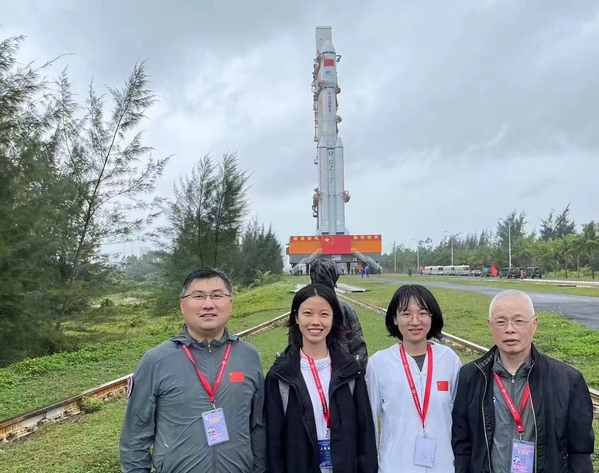On November 12, the Tianzhou-5 cargo spacecraft was successfully lifted off from the Wenchang Spacecraft Launch Site. The spacecraft was loaded with the stem cell experimental unit designed by the research team led by Prof. YU Luyang and Prof. WANG Jinfu at the Zhejiang University College of Life Sciences. This unit made its “rendezvous” with the previously installed biotechnological experimental equipment in the Wentian laboratory cabin module. With the operation of the Shenzhou-14 crew, the first stem cell research project of engineering application system got underway in China’s Space Station.

Through automatic liquid exchange, temperature control and air supply, the experimental device will induce the differentiation of human bone marrow mesenchymal stem cells to bone cells and conduct real-time microscopic imaging. After the completion of the in-orbit experiment, the cell samples in the experimental device will return to the ground with the astronauts for further biological analysis. “Our team will carry out biochemical and molecular biological tests on the returned samples and conduct matching experiments on the ground,” said project leader YU Luyang.
Why is the research of osteogenic differentiation of stem cells in space?
The microgravity environment in space can cause severe bone loss and osteoporosis in astronauts. Bone marrow is a crucial hub of hair production in the body, and its mesenchymal stem cells are the primary source of bone cell replenishment.
How do bone cells disappear in space?
The team’s previous study found that some bone marrow mesenchymal stem cells turned into adipocytes rather than differentiate into bone cells in space. “This has striking resemblance to bone loss in the elderly. Based on our previous observations, we will further explore its biological mechanisms,” said YU Luyang.
With the help of the stem cell experimental device in China’s Space Station, the team will further analyze the phenotypic changes in terms of differentiation of bone marrow stem cells and the genetic profile and epigenetic features of differentiated cells in the microgravity environment in space.
The team conducted relevant stem cell research on board the Shijian-10 satellite and the Tianzhou-1 cargo spacecraft in 2014 and 2017, revealing that with space microgravity, bone calcium would be continuously lost and its production would be correspondingly reduced. Through these experiments, the team identified how space microgravity affected the core signaling pathways to osteoclastogenesis.
“The manned space station is an ideal platform for experiments in space,” said WANG Jinfu. “To figure out how the space environment affects the human body, we should conduct research in the real space environment.”
“Through the exploration of the emerging frontier areas such as space biology, computational biology, and synthetic biology, a galaxy of talent will gravitate towards the first-class platform. Only in this way can we better tackle core technologies, focus on major national strategies and meet national needs,” said YU Luyang.
Looking ahead, the team will further their research into the influence of the deep space environment on osteogenesis, identify relevant targets for bone metabolic diseases, and provide new clues to drug development and intervention strategies.
Photo credit: The research team led by Prof. YU Luyang and Prof. WANG Jinfu
(From ZJU NEWSROOM)

